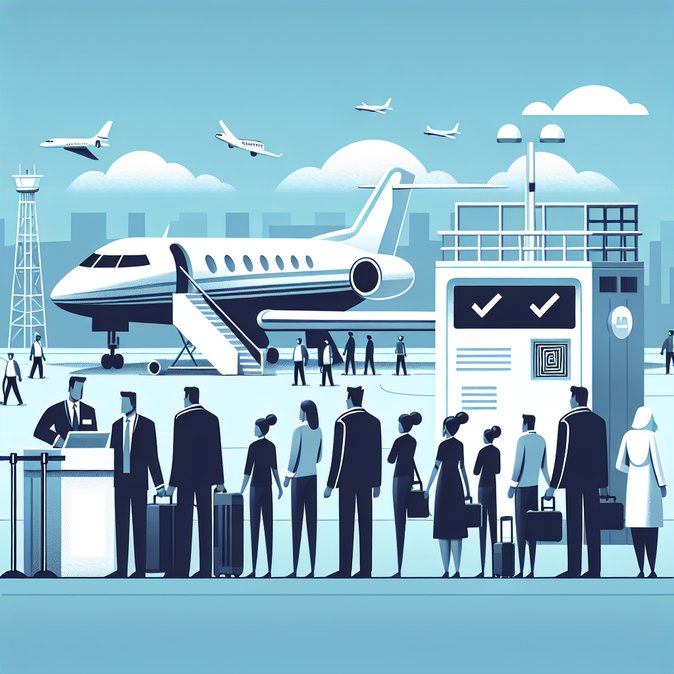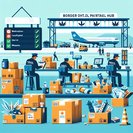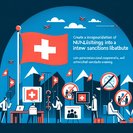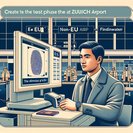
ZÜRICH – A swarm of fans and photographers descended on Zürich Airport (ZRH) on Saturday afternoon, 8 November 2025, when Brazilian superstar Ronaldinho stepped off a chartered Gulfstream for a charity match in Lucerne. While the story made tabloid headlines, the behind-the-scenes choreography provided an instructive preview of how Switzerland now handles very-high-profile arrivals under the evolving Schengen Entry/Exit System (EES).
1. Tight coordination between the airport’s Fixed-Base Operator (FBO), cantonal police and the federal border-guard corps (BAZG) meant the aircraft was marshalled to a remote stand, where biometric enrolment kiosks identical to those that will go live for commercial passengers on 17 November were temporarily wheeled in. Ronaldinho and his entourage were electronically registered in under four minutes – the first live VIP test of the portable EES kit that ZRH will use for heads-of-state, charter crews and late-night diversions.
2. Swiss officials say the trial run exposed practical lessons. The celebrity’s agent initially presented a stack of passports for bulk processing – a habit from pre-EES days. Under the new rules each traveller must present themselves in person for face recognition and four-finger scans. «The operation still moved faster than the old manual stamp-and-escort routine,» a border-police spokesperson told Blick, «but we will add extra signage in the VIP lounge so guests know what to expect.»
![Private-jet arrival of football legend Ronaldinho at Zürich Airport spotlights new VIP border-security workflow]()
3. For corporate mobility managers the episode is a reminder that, once EES is fully enforced, third-country executives landing by business jet will face the same biometric capture as economy-class visitors – unless they already hold a Swiss or EU residence permit. Companies planning board meetings in Davos or Lugano are being encouraged to build an extra 20–25 minutes into their arrival schedules and to pre-submit crew and passenger manifests in the new «Advance Passenger Information 2.0» (API) format that Switzerland began piloting in October.
4. Airport authorities insist the system will not erode Switzerland’s reputation for discreet, high-speed private-aviation handling. ZRH has installed seven mobile EES workstations, while Geneva and Basel each have four. «Our goal is to keep kerb-to-club arrival times under 30 minutes for VIPs, even with the additional biometric step,» says airport COO Stefan Tschannen. The Ronaldinho test suggests that target is realistic – provided stakeholders heed the new playbook.
Business implication: Companies that frequently fly senior staff or clients into Switzerland by charter should update their travel policies, register with the airport’s ‘Trusted FBO’ programme and brief travellers on the EES requirement to appear in person at the kiosk, even when handlers are escorting documents. Failure to comply could mean awkward delays in full media glare – as Saturday’s flash-bulbs demonstrated.
1. Tight coordination between the airport’s Fixed-Base Operator (FBO), cantonal police and the federal border-guard corps (BAZG) meant the aircraft was marshalled to a remote stand, where biometric enrolment kiosks identical to those that will go live for commercial passengers on 17 November were temporarily wheeled in. Ronaldinho and his entourage were electronically registered in under four minutes – the first live VIP test of the portable EES kit that ZRH will use for heads-of-state, charter crews and late-night diversions.
2. Swiss officials say the trial run exposed practical lessons. The celebrity’s agent initially presented a stack of passports for bulk processing – a habit from pre-EES days. Under the new rules each traveller must present themselves in person for face recognition and four-finger scans. «The operation still moved faster than the old manual stamp-and-escort routine,» a border-police spokesperson told Blick, «but we will add extra signage in the VIP lounge so guests know what to expect.»

3. For corporate mobility managers the episode is a reminder that, once EES is fully enforced, third-country executives landing by business jet will face the same biometric capture as economy-class visitors – unless they already hold a Swiss or EU residence permit. Companies planning board meetings in Davos or Lugano are being encouraged to build an extra 20–25 minutes into their arrival schedules and to pre-submit crew and passenger manifests in the new «Advance Passenger Information 2.0» (API) format that Switzerland began piloting in October.
4. Airport authorities insist the system will not erode Switzerland’s reputation for discreet, high-speed private-aviation handling. ZRH has installed seven mobile EES workstations, while Geneva and Basel each have four. «Our goal is to keep kerb-to-club arrival times under 30 minutes for VIPs, even with the additional biometric step,» says airport COO Stefan Tschannen. The Ronaldinho test suggests that target is realistic – provided stakeholders heed the new playbook.
Business implication: Companies that frequently fly senior staff or clients into Switzerland by charter should update their travel policies, register with the airport’s ‘Trusted FBO’ programme and brief travellers on the EES requirement to appear in person at the kiosk, even when handlers are escorting documents. Failure to comply could mean awkward delays in full media glare – as Saturday’s flash-bulbs demonstrated.










